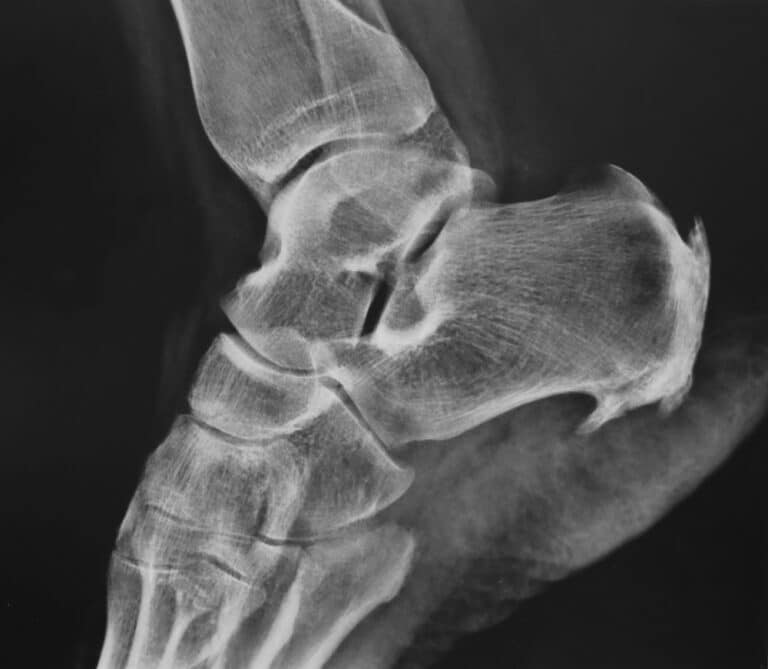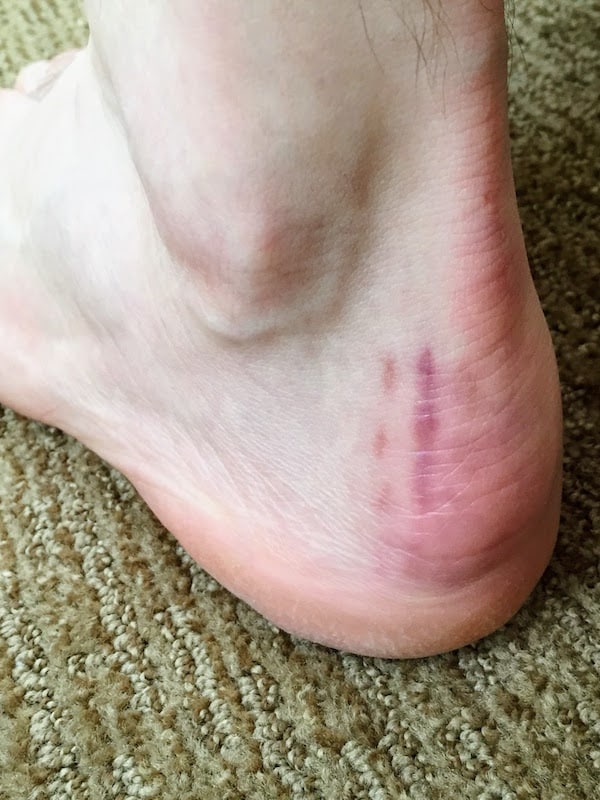Metatarsal lengthening surgery is a procedure performed to address conditions such as metatarsalgia or a shortened metatarsal bone. It involves making controlled cuts in the bone and inserting bone grafts or devices to lengthen the metatarsal. The goal is to restore foot alignment, relieve pain, and improve foot function.
Recovery involves wearing a protective boot or cast, limiting weight-bearing activities, and undergoing physical therapy. Risks include infection and nerve damage. Consultation with a qualified surgeon is essential for personalized advice.
Get a $500 Off Discount on Toe Shortening Surgery
The Cost of Metatarsal Lengthening Surgery Factors and Considerations
The cost of metatarsal lengthening surgery can range from approximately $5,000 to $30,000 or more. However, it’s important to keep in mind that these are approximate figures and can vary depending on factors such as the specific procedure, the surgeon’s fees, the geographical location, and any additional costs related to anesthesia, hospital stay, and postoperative care. It is recommended to consult with a surgeon to get a more accurate cost estimate based on your individual case.
Understanding Metatarsal Lengthening Surgery
Metatarsal lengthening surgery is a procedure performed to address certain foot conditions such as metatarsalgia, Morton’s neuroma, or metatarsal shortening. It involves surgically lengthening one or more of the metatarsal bones in the foot to improve alignment, relieve pressure, and restore proper foot function.
During the surgery, the surgeon may perform a variety of techniques, including bone grafting, bone cuts, or the insertion of an implant, to achieve the desired lengthening. The specific approach depends on the individual’s condition and the surgeon’s expertise. Metatarsal lengthening surgery aims to alleviate pain, improve stability, and enhance overall foot function. It is typically recommended when conservative treatments have failed to provide adequate relief.
The Purpose and Goals of Metatarsal Lengthening
The purpose of metatarsal lengthening surgery is to address specific foot conditions and improve the alignment and function of the foot. The goals of this procedure may include:
- Alleviating Pain: Metatarsal lengthening can help relieve pain associated with conditions such as metatarsalgia or Morton’s neuroma. By correcting the alignment of the metatarsal bones, pressure and stress on the affected area can be reduced, leading to pain relief.
- Restoring Foot Function: Lengthening the metatarsal bones can improve the overall function of the foot. It can help restore proper weight distribution, balance, and stability, allowing for more comfortable and efficient walking and standing.
- Correcting Deformities: Metatarsal lengthening surgery can address metatarsal shortening, which can lead to deformities like toe deformities or a high arch. By restoring the length and alignment of the metatarsal bones, the foot’s structure can be improved.
- Enhancing Mobility: Improved foot alignment and function can enhance mobility and increase the range of motion in the affected foot. This can allow individuals to engage in activities they may have previously avoided due to pain or limited mobility.
It is important to consult with a foot specialist or orthopedic surgeon to determine if metatarsal lengthening surgery is appropriate for your specific condition and goals. They can provide a comprehensive evaluation and guide you through the decision-making process.
Recovery and Rehabilitation After Metatarsal Lengthening Surgery
Recovery and rehabilitation following metatarsal lengthening surgery are crucial for a successful outcome. The specific timeline and approach may vary depending on individual factors and the extent of the surgery, so it’s important to follow your surgeon’s instructions. Here are some general considerations:
- Immobilization: After surgery, you may need to wear a protective boot or cast to immobilize the foot and promote proper healing. This helps to prevent excessive stress on the surgical site and allows for bone and soft tissue healing.
- Weight-Bearing: Your surgeon will provide guidelines on when and how much weight you can bear on the operated foot. Initially, you may be advised to avoid weight-bearing and use crutches or a wheelchair. Gradually, as the healing progresses, you will be allowed to gradually increase weight-bearing activities.
- Physical Therapy: Physical therapy plays a crucial role in the rehabilitation process. A physical therapist will guide you through exercises and techniques to promote healing, improve range of motion, restore strength, and enhance overall foot function. They may also provide guidance on gait retraining and orthotic devices.
- Pain Management: Pain and discomfort are common during the early stages of recovery. Your surgeon may prescribe pain medication or recommend over-the-counter pain relievers to manage pain. Following their instructions on medication usage is essential.
- Follow-up Appointments: Regular follow-up appointments with your surgeon are important to monitor the progress of healing and address any concerns or complications that may arise. They will assess your foot’s condition, remove stitches or dressings if necessary, and adjust the treatment plan as needed.
It’s essential to adhere to your surgeon’s post-operative instructions, including keeping the surgical site clean and dry, avoiding excessive physical activities, and wearing proper footwear. This will help promote a smooth recovery and optimize the long-term outcome of metatarsal lengthening surgery.
Postoperative Care Instructions and Wound Healing
After metatarsal lengthening surgery, proper postoperative care is crucial for optimal healing and recovery. Here are some key points to consider:
- Incision Care: Keep the surgical incisions clean and dry, following your surgeon’s instructions for dressing changes and wound care. Avoid submerging the foot in water until cleared by your surgeon.
- Pain Management: Take prescribed pain medication as directed to manage postoperative pain. Consult with your healthcare provider before taking any over-the-counter pain relievers.
- Rest and Elevation: Elevate your foot as much as possible to reduce swelling and promote blood circulation. Minimize weight-bearing activities and avoid excessive standing or walking during the initial recovery period.
- Physical Activity: Follow your surgeon’s guidelines regarding weight-bearing and activity levels. Gradually increase activity as advised, and use crutches or a walking aid if necessary.
- Dressing Changes: Follow the recommended dressing change schedule to maintain cleanliness and prevent infection. Watch for signs of infection and notify your surgeon if you notice any concerning symptoms.
- Follow-up Appointments: Attend all scheduled follow-up appointments to monitor your progress, address any concerns, and ensure proper healing.
Remember that individual recovery experiences may vary, and it’s important to follow your surgeon’s specific instructions for a successful recovery. If you have any questions or concerns, don’t hesitate to reach out to your healthcare provider.
Reducing Swelling and Inflammation
Reducing swelling and inflammation is an essential part of the recovery process after metatarsal lengthening surgery. Here are some strategies that can help:
- Ice Therapy: Apply ice packs to the surgical area for 15-20 minutes at a time, several times a day. This can help constrict blood vessels, reduce swelling, and alleviate discomfort. Be sure to wrap the ice pack in a thin cloth to protect your skin.
- Elevation: Elevate your foot above the level of your heart as much as possible. This helps promote proper blood circulation and reduces fluid buildup in the affected area. Use pillows or cushions to support your foot while resting or sleeping.
- Compression: Wearing compression socks or bandages can help reduce swelling by applying gentle pressure to the area. Consult with your healthcare provider about the appropriate compression level and duration for your specific condition.
- Medications: Your surgeon may prescribe anti-inflammatory medications or recommend over-the-counter options to help manage swelling and inflammation. Follow their instructions and take the medication as directed.
- Avoiding Prolonged Standing or Sitting: Minimize activities that require prolonged periods of standing or sitting, as they can contribute to increased swelling. Take regular breaks to elevate your foot and move around gently.
- Gentle Exercise: Engage in gentle exercises as recommended by your healthcare provider. This can help promote circulation, reduce stiffness, and prevent muscle weakness. Avoid high-impact activities or strenuous exercises until cleared by your surgeon.
Remember to consult with your healthcare provider for personalized advice and guidance on reducing swelling and inflammation after metatarsal lengthening surgery.
References:
- National Center for Biotechnology Information. (2010). Reconstruction of the Short First Metatarsal and Associated Metatarsophalangeal Joint Instability. Journal of Orthopaedic Case Reports, 4(2), 37-40. Retrieved from https://www.ncbi.nlm.nih.gov/pmc/articles/PMC2926359/
- National Center for Biotechnology Information. (2010). First Metatarsal Lengthening for Congenital Hallux Varus: A Technical Tip. Journal of Orthopaedic Case Reports, 4(3), 67-69. Retrieved from https://www.ncbi.nlm.nih.gov/pmc/articles/PMC2882014/
- European Foot and Ankle Society. (2008). First Metatarsal Lengthening. Techniques in Foot & Ankle Surgery, 7(1), 45-49. Retrieved from https://journals.lww.com/techfootankle/Abstract/2008/03000/First_Metatarsal_Lengthening.6.aspx




